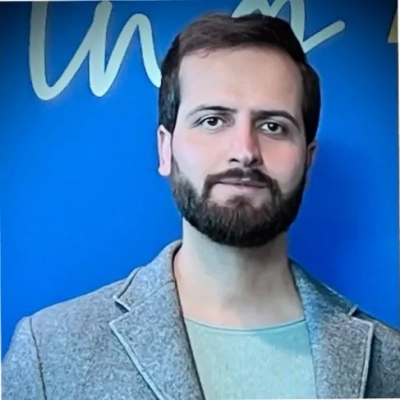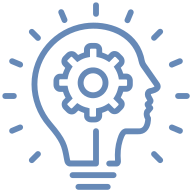What HR Technology Helps Improve Workflows?
Discover the cutting-edge HR technologies that are revolutionizing the way businesses manage workflows and enhance efficiency. This article provides an in-depth exploration of expert-driven insights into tools such as AI-powered candidate matching and innovative scheduling applications. Unveil the transformative impact that these advanced solutions have on recruitment, team management, and overall HR effectiveness.
- AI-Powered Candidate Matching Revolutionizes Recruitment
- AI Scheduling Tools Streamline Interview Process
- ATS Optimizes Job Posting and Candidate Management
- AI Integration Enhances HR Workflows
- AI-Powered Skills Assessments Improve Hiring Efficiency
- iPaaS Connects Disparate HR Systems
- Workable's ATS Automates Recruitment Tasks
- ATS Automates Candidate Screening and Improves Hiring
- Custom HR Platform Automates Routine Tasks
- Cloud-Based HR Software Streamlines Team Management
- HRMS Centralizes HR Tasks and Improves Efficiency
- ATS Streamlines Recruitment and Provides Data Insights
- Competency-Based Assessments Enhance Hiring and Development
- ClockOn Automates Compliance and Certification Tracking
- AI-Driven Skill Assessment Improves Candidate Evaluation
- Employee Engagement Platform Boosts Productivity and Retention
- Cloud-Based HRMS Transforms HR Workflows
AI-Powered Candidate Matching Revolutionizes Recruitment
At Keller Executive Search, we've seen firsthand how AI-powered candidate matching technology has revolutionized our executive recruitment process. Before implementing this solution, our team spent countless hours manually screening resumes and LinkedIn profiles to identify potential matches for C-suite positions. Today, this technology helps us analyze thousands of profiles within minutes, considering not just keywords but also contextual factors like career progression and leadership experience.
What makes this particularly valuable is how it helps us identify candidates who might not be obvious choices on paper but have the right combination of skills and experiences. For example, we recently placed a CFO at a major healthcare company by discovering a candidate whose experience in tech startups brought fresh perspectives to traditional healthcare financial operations.
The real game-changer isn't just the time saved - it's how this technology helps us make better, more diverse matches by reducing unconscious bias in the initial screening process. We're now able to present our clients with broader, more varied candidate pools while maintaining the high standards Keller is known for in executive search.
That said, we always emphasize that technology complements rather than replaces human judgment. Our experienced consultants use these AI insights as a starting point for the deep, relationship-based work that defines executive search. It's about combining technological efficiency with the human touch that's essential in leadership recruitment.

AI Scheduling Tools Streamline Interview Process
If I had a dollar for every hour spent manually scheduling interviews, I'd have a substantial savings account. Thankfully, AI scheduling tools like Calendly and GoodTime have significantly streamlined the process. No more endless back-and-forth emails—just a simple 'Pick a time that works for you.' A true game changer for real.
Similarly, Applicant Tracking Systems (ATS) like Greenhouse and Lever have been invaluable. Before these tools, we were managing candidate data through spreadsheets and email threads that seemed never-ending. Now, everything is centralized in one place, making it much easier to access candidate details and stay organized throughout the hiring process.

ATS Optimizes Job Posting and Candidate Management
The utilization of an Applicant Tracking System (ATS) has been a game-changer for our organization. Our ATS is able to post to multiple job boards, including a custom Careers page on our company website -- at a fraction of the cost of what we would have to pay if we posted to each of those job boards individually. The system is web-based so it can be accessed from any place that has an internet connection. The ATS also has different access settings, so it allows various interviewers access to their respective candidates only. The system is also able to generate automated emails to candidates depending on the status updates we input. The system allows users to complete phone screen surveys and interviewer feedback forms within a candidate's ATS profile. We are also able to automate the completion of references from within the system itself. Overall, our ATS has reduced the number of manual tasks we have to perform and increased the optimization of the processes that do need to be completed.

AI Integration Enhances HR Workflows
AI has redefined how we approach HR workflows. We've integrated OfficeIQ AI with our ATS, HireME, transforming the way we source, screen, and engage with candidates.
Our AI helps us shortlist candidate profiles, match the right talent to the right job, and conduct the first level of interviews—all while providing real-time feedback and insights. It ensures that we're not just hiring faster, but hiring smarter, reducing manual effort and improving decision-making.
Beyond recruitment, AI-driven automation allows us to analyze hiring trends, predict workforce needs, and enhance candidate experience through conversational AI agents. From answering candidate queries to streamlining onboarding, AI is making HR more efficient, data-driven, and personalized.
By integrating AI into our HR processes, we've shifted from time-consuming tasks to strategic talent management, ensuring every hire is a perfect fit.

AI-Powered Skills Assessments Improve Hiring Efficiency
One of the biggest game-changers for HR workflows has been AI-powered skills assessments. As the founder of Testlify, I've seen this technology firsthand and how it makes a real difference. With AI, hiring has become much more efficient. Instead of relying on resumes or subjective interviews, candidates are evaluated based on actual skills, which is what really matters.
Here's a concrete example: A global tech client of ours was able to cut their hiring time by 30% in just three months after using our platform. They went from a 10-day interview process down to just 5 days! That's a massive time-saver, and it means they can get the best talent on board faster.
The beauty of using AI in pre-hire testing is that it saves time, cuts out bias, and helps teams make smarter decisions. It not only helps HR teams work more efficiently but also improves the quality of hires.

iPaaS Connects Disparate HR Systems
As an implementer of HR technologies and a long-time expert in the field, today the most important "technology" is the one that binds all of the disparate systems together. The age-old debate about point solutions versus all-in-one systems has been leaning toward point solutions lately with the incredible innovation that has happened in recent years as a result of the infusion of investment money. It's not uncommon for a mid-sized organization to have half a dozen or more solutions or to be exploring ways to get more of a competitive advantage from point solutions. If all of these technologies can't be housed under one developer's roof, at least the tool that binds them all together can be. Some of those connectors might exist within the systems themselves, but the best way to manage them all in one place is an iPaaS, or Integration Platform as a Service. The companies I work with that opted to create a "library" of integrations that can be managed on an ongoing basis have achieved a new type of competitive advantage through enhanced data integrity and the potential to move that data into consolidated reporting and visualization tools.

Workable's ATS Automates Recruitment Tasks
What really came in handy in our everyday workflow is Workable's ATS. It helped us a lot with the manual tasks, such as job board postings, resume parsing, and candidate communications. For example, we often use Workable's one-click job posting. With it, we can reach a wider audience quickly. With automated responses, all candidates receive timely feedback. Besides, we maintain their overall experience while enhancing our employer brand. A standout example is when we had to fill a high-priority role and received over 2,000 applications in a week. Thanks to Workable's automation, we were able to filter candidates by defined criteria and seamlessly schedule interviews. The benefit is that you can save precious time without compromising the personal touch. Its analytics tools also provide actionable insights into recruitment metrics. This helps us optimize our strategies and stay ahead in a competitive market.
ATS Automates Candidate Screening and Improves Hiring
One piece of technology that has revolutionized HR workflows is applicant tracking systems (ATS). Early in my coaching career, I worked with a manufacturing company in the US that was struggling with recruitment inefficiencies. They were receiving hundreds of applications for each position, yet their manual process meant critical candidates were slipping through the cracks. Drawing on my background in telecommunications and process optimization, I helped them integrate an ATS that automated their candidate screening process. By configuring the system to align with their specific hiring criteria, it became possible to filter out unqualified candidates while flagging high-potential ones for interviews. This alone reduced their hiring timeline by 40% and significantly improved their quality of hires.
The transformation didn't end there. I also coached their HR team on how to use the data insights provided by the ATS to refine their job descriptions and recruitment strategies. With my MBA specialization in finance, I was able to calculate the direct ROI of this implementation, showing the company how their reduced time-to-hire and improved retention rates translated into tangible cost savings. This success story underscores how leveraging the right technology, combined with strategic coaching, can make HR teams more efficient and impactful while driving measurable business growth. For HR professionals, adopting an ATS is no longer just an option but a competitive necessity.
Custom HR Platform Automates Routine Tasks
I hate to break it to you, but over the last seven years we have not found a one-size-fits-all tool. We have looked at a number of products, possible integrations, and it all looks like an insurmountable "zoo" of products that need to be supported after implementation. Therefore, two years ago we decided to develop our own HR platform that would automate most of the routine tasks. Three modules that cover the main aspects of HR: candidate sourcing and screening using artificial intelligence, onboarding and compliance thanks to Employer of Record deployed in 100 countries, and HR management, which includes elements such as time tracking, cost accounting, benefits accounting, financial dashboard and reporting.

Cloud-Based HR Software Streamlines Team Management
One piece of technology that has significantly improved our workflows at The Alignment Studio is the integration of cloud-based HR management software. With a multidisciplinary team of ten professionals, including physical therapists, Pilates instructors, and allied health specialists, managing schedules, payroll, and professional development used to be a complex and time consuming task. By implementing this software, we've streamlined processes like onboarding, performance tracking, and compliance management. It's particularly beneficial for ensuring our team remains up to date with continuing education requirements, which is critical in the health and wellness industry.
My 30+ years of experience in team management and operations were instrumental in identifying the right solution to meet our needs. For instance, I tailored the system to integrate with clinical scheduling software to minimize redundancies and ensure accurate time tracking for both patient appointments and team commitments. This resulted in improved efficiency, clearer communication, and better staff satisfaction. A standout moment was seeing our onboarding process improve dramatically, reducing time spent on paperwork and allowing new hires to focus on integrating with the team and delivering exceptional care. It's been a game changer in creating a more cohesive, high performing team.

HRMS Centralizes HR Tasks and Improves Efficiency
One piece of technology that has significantly improved HR workflows is the adoption of cloud-based Human Resource Management Systems. These platforms streamline a range of HR tasks, from recruitment and onboarding to payroll and performance management. In my experience, systems like these not only centralize employee data but also allow for seamless communication and collaboration across teams. For instance, when managing my team at Ozzie Mowing & Gardening, an HRMS enabled us to track employee performance in real time, ensuring that everyone's strengths were aligned with the right projects. It also simplified compliance with local employment regulations by automating record-keeping and reminders for necessary certifications and renewals.
My qualifications and 15 years of hands-on leadership experience were critical in making this transition smooth and impactful. As someone who has managed a growing team across hundreds of projects, I understood the importance of investing in technology that could scale alongside our business. My background in horticulture and operational management allowed me to identify bottlenecks in our previous manual HR processes and ensure that the HRMS we selected addressed those pain points. This thoughtful implementation led to increased efficiency, improved team morale, and ultimately, a better experience for our clients because of the heightened focus on staff development and engagement.
ATS Streamlines Recruitment and Provides Data Insights
One specific technology that has significantly improved my HR workflow is an Applicant Tracking System (ATS). This tool has streamlined recruitment, from job posting to candidate selection.
I can easily manage applications, track candidate progress, and collaborate with hiring managers in real-time with an ATS. Automating repetitive tasks, such as resume screening and interview scheduling, has saved countless hours, allowing my team to focus on strategic initiatives rather than administrative burdens.
Moreover, the data analytics features provide valuable insights into recruitment metrics, helping us refine our hiring strategies and improve candidate quality. My key recommendation for HR professionals is to invest in a robust ATS that fits your organization's needs. The right technology enhances efficiency and elevates the overall candidate experience, making your company more attractive to top talent.

Competency-Based Assessments Enhance Hiring and Development
One piece of technology that has significantly improved HR workflows—both in hiring and employee development—is the use of competency-based assessment tools. At Hiring Indicators, our assessments are built on over 50 years of workplace competency data, designed to do more than just help you make better hiring decisions—they're equally powerful for ongoing talent development.
In hiring, competency assessments provide clear, data-driven insights into whether a candidate has the specific skills, behaviors, and cognitive abilities required for a role. Unlike personality tests, which offer generalized traits that don't always translate to job performance, our assessments are tailored directly to the role, using the actual job description to evaluate job-specific competencies. This not only improves the quality of hires but also saves time by focusing on what truly matters for success in the position.
But the value doesn't stop after the offer letter is signed. These same assessments create a roadmap for employee development. They identify areas where new hires can grow, providing managers with actionable insights to support coaching, training, and career progression. For existing employees, re-assessing competencies over time helps track development, guide succession planning, and ensure your talent strategy evolves with your business needs.
The beauty of competency-based assessments is that they create a continuous feedback loop—from hiring the right people to developing them into high performers. That kind of strategic alignment has been a game-changer for many organizations looking to maximize both talent acquisition and employee growth.
ClockOn Automates Compliance and Certification Tracking
ClockOn has been a game-changer for us in managing work rights and WHS compliance with its built-in HR functionality. Right-to-work checks are now automated, making it easy to track certifications and ensure every employee meets legal and safety requirements. With everything clearly visible, we have confidence in our compliance and avoid unnecessary administrative strain. Without this system in place, we'd be creating more work for ourselves while increasing risk—something we're glad to have eliminated.

AI-Driven Skill Assessment Improves Candidate Evaluation
One of the most transformative advancements in our HR workflow has been AI-driven skill assessment. Unlike traditional résumé screening, which often relies on keyword matching or manual interpretation, AI leverages natural language processing (NLP) and machine learning algorithms to analyze a candidate’s résumé holistically. It identifies both explicitly stated skills and inferred competencies based on work experience, industry trends, and contextual nuances.
Beyond simple extraction, the AI assesses skill relevance by benchmarking against job descriptions, role expectations, and even organizational competency frameworks. This allows for a more precise and scalable evaluation of candidates, reducing the reliance on subjective judgment while uncovering transferable skills that might otherwise be overlooked.
By integrating AI skill assessment into our hiring process, we’ve significantly increased efficiency, reduced bias, and improved the quality of candidate-job matching. This technology enables HR teams to focus on strategic decision-making rather than spending excessive time on initial résumé reviews, ultimately driving better hiring outcomes and workforce planning.

Employee Engagement Platform Boosts Productivity and Retention
In my career, one transformative technology that has significantly improved HR workflows is the integration of comprehensive employee engagement platforms, specifically Give River's platform. As co-founder, I've seen how seamlessly it integrates with HRIS systems, Slack, MS Teams, and Outlook, which streamlines the HR processes and improves communication.
Our platform's 5G Method, which combines recognition, wellness, and growth tools, is not only innovative but also data-backed, showing a 34% higher profit rate for companies focusing on employee wellness. Seeing over 80% engagement within the first month and improved employee satisfaction metrics reflects its efficiency in driving engagement and productivity.
The learning management system within Give River also automates and simplifies training processes significantly. It helps create customized, gamified learning experiences which not only boost skills but also lead to higher retention and lower turnover rates. This allows HR teams to focus on strategic developments rather than mundane tasks. In my journey as the co-founder of Give River, I've seen how integrating recognition and gamification tools can transform HR workflows significantly. One platform I highly recommend is our own Give River, which combines personal and professional growth mechanisms with innovative gamification methods to increase employee engagement.
For example, our 5G Method leverages gamified learning experiences such as "River Runs" to develop skills while keeping employees motivated with rewards. This not only streamlines the training process but also fosters a culture of continuous learning and collaboration. Integrating this with existing communication tools like Slack and MS Teams allows seamless incorporation into daily workflows, ensuring the process is smooth and minimizing disruptions.
Moreover, data-driven insights from our platform's dashboard provide HR teams with valuable analytics on employee sentiment and engagement trends. This enables data-driven decisions that can improve retention and overall workplace satisfaction. Investing in a platform that combines recognition, growth, and tangible data insights proves crucial for optimizing HR operations and fostering a thriving company culture.

Cloud-Based HRMS Transforms HR Workflows
As a business owner with over 20 years of experience managing a family-owned company, one piece of technology that has significantly transformed our HR workflows is the implementation of a cloud based Human Resource Management System. This system streamlined everything from employee onboarding to scheduling and payroll, which were previously handled manually and consumed a lot of time. For a company like mine with 10 employees, having a centralized platform allowed us to improve communication, track certifications like my TRAQ and ensure compliance with labor regulations effortlessly. For example, we can now maintain accurate records of certifications, safety training, and performance reviews in one place, which is essential in an industry where safety and technical skills are paramount.
My background in both the tree care industry and formal education at SMU gave me the expertise to choose the right system that would align with our operational needs. As someone who's been involved in the business since childhood, I knew the pain points of manual HR processes and how they affected both productivity and employee satisfaction. By implementing this technology, we've reduced administrative errors, improved scheduling efficiency, and created a better employee experience overall, which has directly contributed to higher morale and retention in our team.






